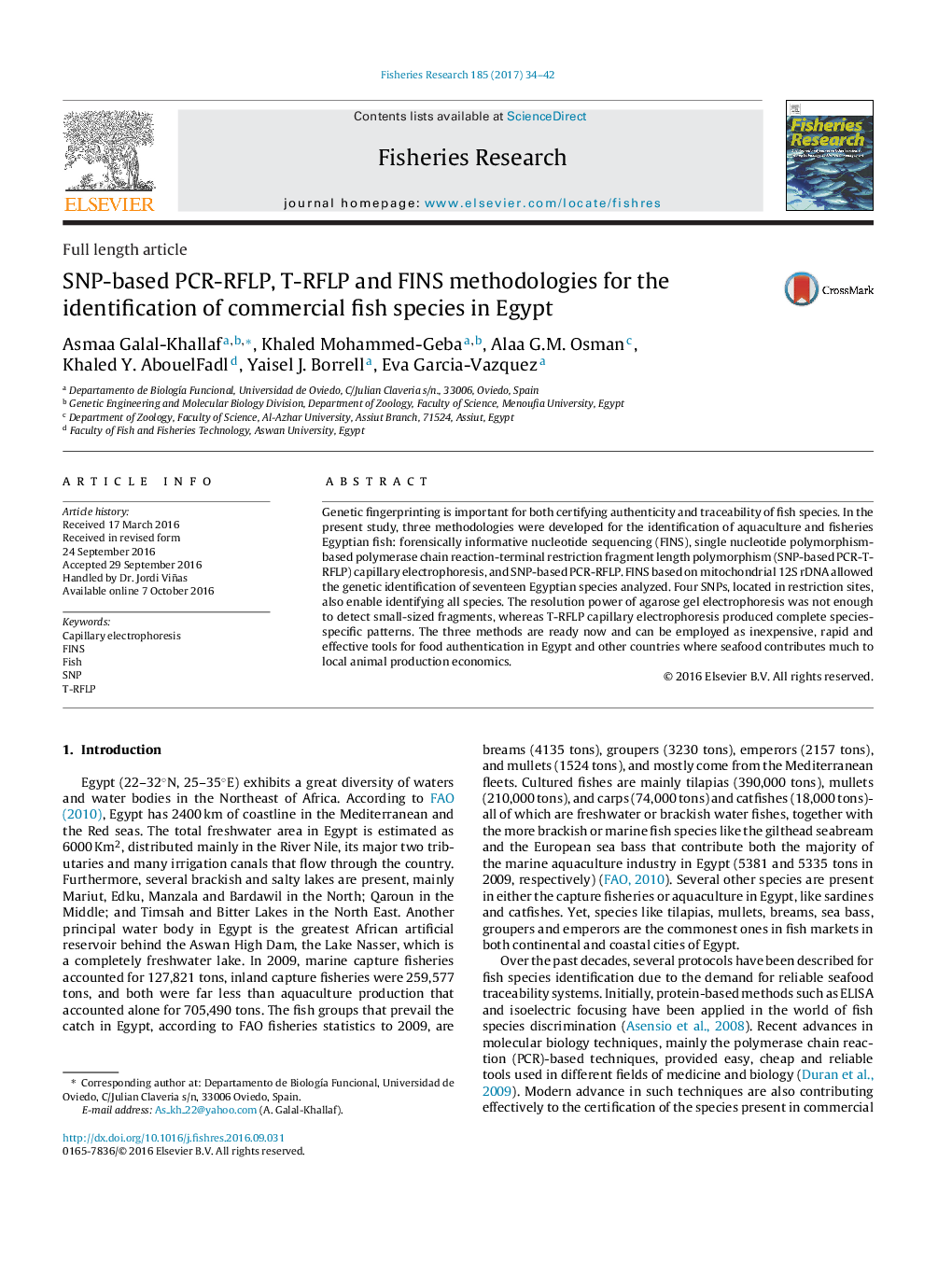| Article ID | Journal | Published Year | Pages | File Type |
|---|---|---|---|---|
| 4542638 | Fisheries Research | 2017 | 9 Pages |
•DNA fingerprinting is poorly studied for Egyptain fishes.•Ribosomal RNA genes are good markers for species discrimination.•SNP-based RFLP and T-RFLP provide reliable markers for Egyptian fish species identification.
Genetic fingerprinting is important for both certifying authenticity and traceability of fish species. In the present study, three methodologies were developed for the identification of aquaculture and fisheries Egyptian fish: forensically informative nucleotide sequencing (FINS), single nucleotide polymorphism-based polymerase chain reaction-terminal restriction fragment length polymorphism (SNP-based PCR-T-RFLP) capillary electrophoresis, and SNP-based PCR-RFLP. FINS based on mitochondrial 12S rDNA allowed the genetic identification of seventeen Egyptian species analyzed. Four SNPs, located in restriction sites, also enable identifying all species. The resolution power of agarose gel electrophoresis was not enough to detect small-sized fragments, whereas T-RFLP capillary electrophoresis produced complete species-specific patterns. The three methods are ready now and can be employed as inexpensive, rapid and effective tools for food authentication in Egypt and other countries where seafood contributes much to local animal production economics.
